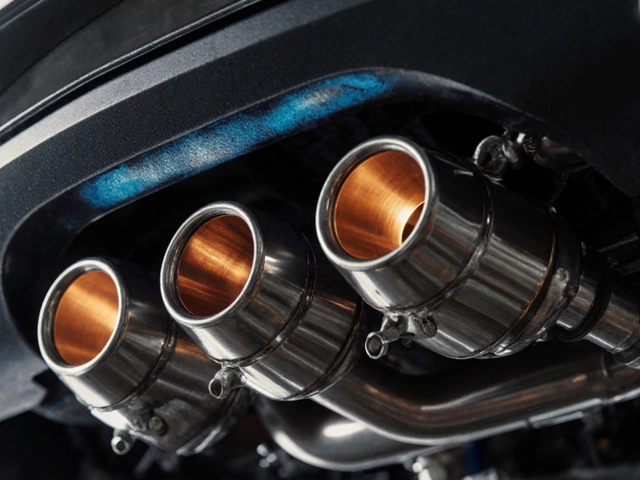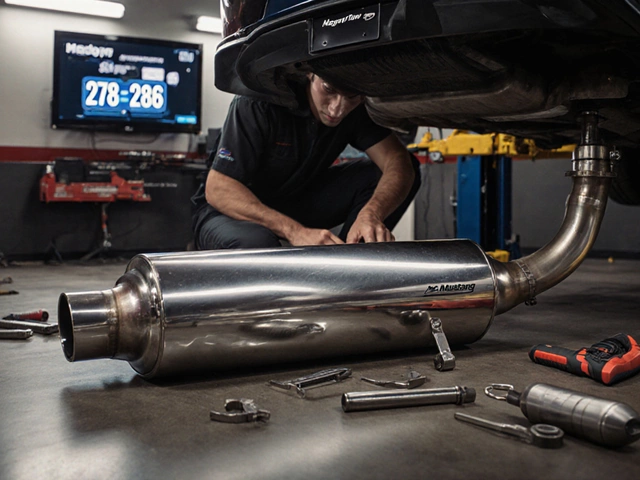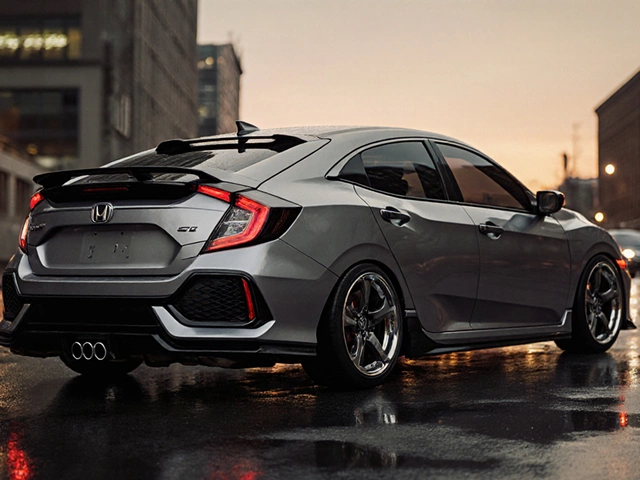Exhaust System Selector Tool
Find Your Perfect Exhaust System
Answer a few questions to get personalized recommendations for your vehicle's exhaust system.
What are your primary goals?
What's your budget range?
Do you need UK MOT compliance?
If you’re wondering about exhaust system types, you’ve come to the right place. Whether you’re a daily‑driver looking for a quieter ride or a weekend racer chasing every horsepower, knowing the different configurations helps you avoid costly mistakes and get the sound you want.
What makes up an exhaust system?
When you hear the term exhaust system is the network of pipes that channels burnt gases away from the engine, reduces noise, and meets emissions standards, think of it as a series of linked components, each with its own job.
- Muffler - softens the sound by using chambers and perforated tubes
- Catalytic Converter - converts harmful gases into less toxic substances before they leave the car
- Resonator - tunes the tone and can reduce drone at cruising speeds
- Header - collects exhaust from each cylinder and funnels it into a single pipe
All of these parts can be swapped, upgraded, or left stock, and the way they’re arranged defines the various exhaust system families you’ll hear about.
Common types of exhaust systems
Below is a quick snapshot of the most popular configurations you’ll see on the market today. Each type balances sound, power, cost, and legality.
| Type | Typical Material | Sound Profile | Performance Gain | Cost Range (GBP) |
|---|---|---|---|---|
| Muffler‑Only | Steel or stainless steel | Moderate - slightly louder than stock | 0-3% | £100‑£300 |
| Cat‑Back | Mandrel‑bent stainless steel or titanium | Sporty growl, noticeable at revs | 3-7% | £300‑£800 |
| Turbo‑Back | Titanium or Inconel | Deep, aggressive roar | 5-12% | £800‑£2,000 |
| Header | Mandrel‑bent stainless steel | Higher‑pitched, more rapid response | 4-10% (depends on engine) | £250‑£600 |
| Resonator‑Swap | Aluminized steel | Reduces drone, smoother mid‑range | 0-2% | £150‑£400 |
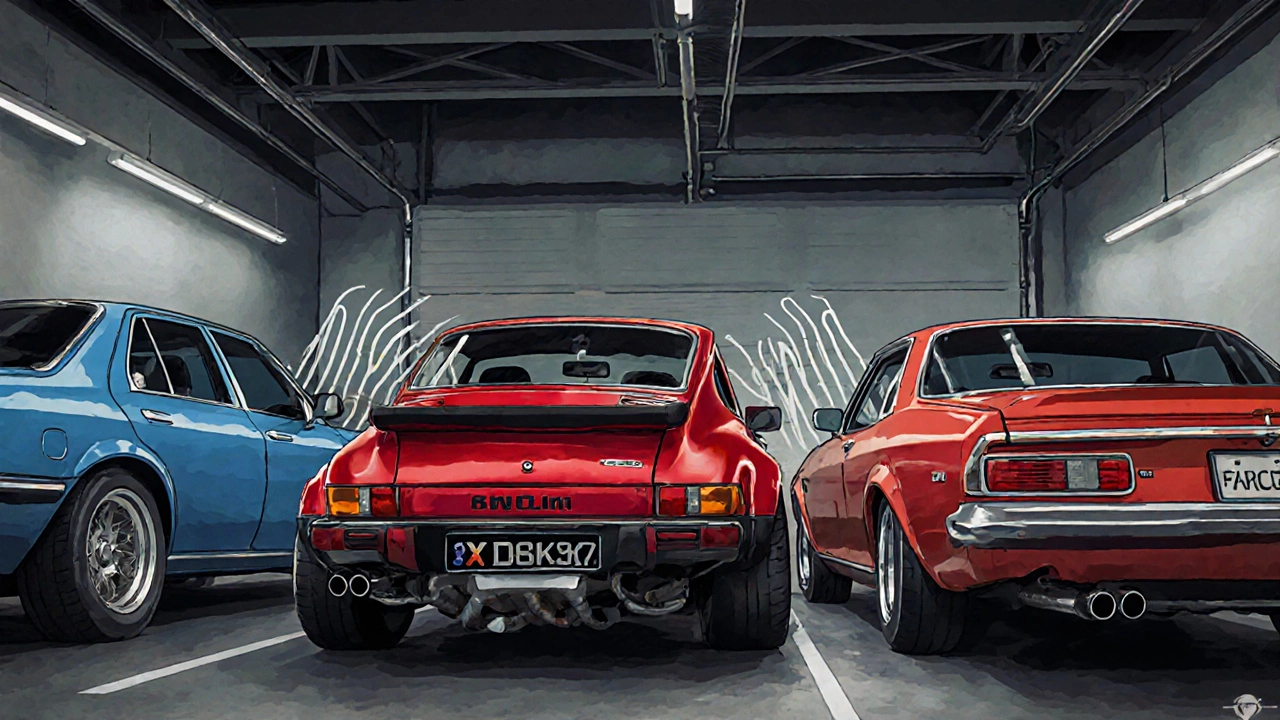
How to choose the right exhaust system for you
Pick a system based on three practical questions:
- What’s your primary goal? If you only want a quieter cabin, a muffler‑only swap or resonator upgrade does the trick. If you crave extra torque for track days, a cat‑back or turbo‑back setup makes sense.
- How much are you willing to spend? Materials drive price. Steel is cheap and durable, stainless steel adds corrosion resistance, while titanium offers weight savings and a higher‑end tone but costs significantly more.
- Are local regulations a concern? In the UK, any modification that changes emissions or noise levels may need MOT approval. Cat‑back kits are usually fine, but turbo‑back systems can push you over the legal noise limit unless they’re specifically certified.
When you line up your answers, the decision matrix becomes clearer: a budget‑friendly muffler‑only for daily comfort, a mid‑range cat‑back for modest power, or a premium turbo‑back if you’re chasing track‑day performance and have the budget to match.
Installation basics - DIY or professional?
Most cat‑back kits are designed for bolt‑on installation, meaning you won’t need to cut or weld anything. Here’s a quick step‑by‑step guide for a typical bolt‑on cat‑back:
- Raise the car safely on jack stands and remove the stock rear pipe.
- Slide the new cat‑back assembly into place, aligning the flanges.
- Secure with the supplied clamps or bolts, torquing to the manufacturer’s spec (usually around 30Nm).
- Reconnect any oxygen sensors or heat shields that were removed.
- Lower the car, start the engine, and listen for leaks. A quick visual check for exhaust escaping around joints is all that’s needed.
If you’re tackling a header swap, expect additional steps: removing the exhaust manifold, possibly upgrading the intake, and ensuring the new header clears the steering rack. Many enthusiasts choose a professional shop for this because precise fit‑ment is critical to avoid vibration or premature failure.
Performance impact - the numbers behind the sound
Sound is the most obvious change, but the real value often lies in horsepower and torque gains. Independent testing by Car Performance Magazine (2024) showed these average improvements on a 2.0L turbo‑charged Ford Focus:
- Muffler‑only: +2hp, +1Nm torque.
- Cat‑back stainless steel: +7hp, +5Nm torque.
- Turbo‑back titanium: +12hp, +9Nm torque.
- Mandrel‑bent header: +6hp, +4Nm torque (only when combined with a cat‑back).
Why does the gain happen? Bigger diameter pipes reduce back‑pressure, allowing exhaust gases to exit faster. Mandrel‑bent bends preserve flow velocity compared to crushed bends. The result is better scavenging, especially at higher rpm.
Remember, the gains are modest on naturally aspirated engines; the biggest benefits appear on turbocharged or supercharged units where exhaust flow directly influences boost pressure.
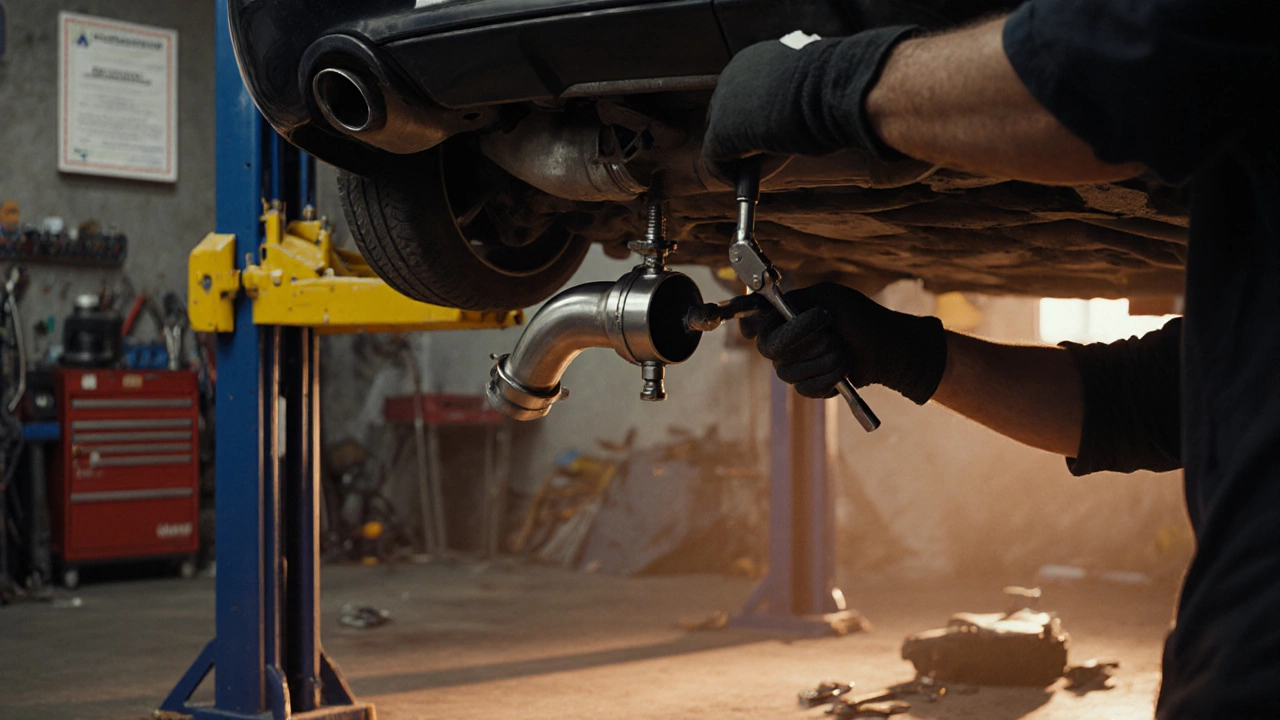
Maintenance, longevity, and common issues
Every piece of metal in the exhaust bay faces heat, moisture, and road salt. Here are the top three problems and how to prevent them:
- Corrosion - Stainless steel and titanium resist rust, but plain steel can rust from the inside out. Regularly wash the under‑carriage and apply a high‑temperature anti‑rust coating.
- Loose clamps or joints - Vibration can loosen bolts over time. Check torque every 5,000km and replace worn washers.
- Cracked resonator or muffler - Heat cycling can cause fatigue. Look for rattles or soot leaks; replace the component before it contaminates the cabin air.
If you hear a sudden whine or notice a drop in power, a quick visual inspection for holes or rusted sections often saves a costly replacement.
Quick checklist before you buy
- Confirm your vehicle’s fit‑ment - check OEM part numbers or use a fit‑guide.
- Decide on material: steel (budget), stainless (corrosion‑resistant), titanium (lightweight premium).
- Verify compliance with UK MOT noise and emissions limits.
- Consider installation method - bolt‑on vs. weld‑on.
- Budget for ancillary parts: clamps, heat shields, and possibly new sensors.
Frequently Asked Questions
Will a cat‑back exhaust make my car louder?
Yes, a cat‑back typically raises the volume by 3‑6dB compared to stock, but the increase is more refined - you’ll notice a deeper growl rather than a harsh whine.
Is a turbo‑back system legal on UK roads?
Only if the kit has an EC type‑approval or a VCA (Vehicle Certification Agency) test certificate. Without it, the car could fail its MOT due to excess noise or emissions.
Do I need to retune the engine after installing a header?
A retune isn’t mandatory on most modern ECUs, but a custom map can unlock an extra 2‑4hp and smooth out the idle, especially on turbocharged models.
Which material lasts the longest?
Titanium offers the best corrosion resistance and weight savings, but stainless steel is a more cost‑effective long‑term choice for most drivers.
Can I install a cat‑back myself?
Absolutely. Most bolt‑on kits come with a step‑by‑step guide and require only basic hand tools. Just double‑check bolt torque specs and ensure no exhaust leaks.
